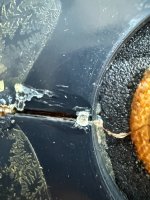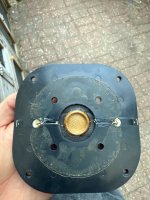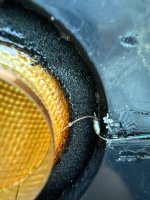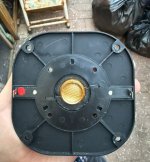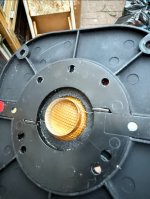Hi,
Thought out of anyone, folks here may be able to help with this.
Basically, I have these old KRK monitors, the 9000bs, which I've been using for years for my music production. They're widely considered some of the best monitors around, and what I feared would happen has. I have a pair and a spare, but in both one of the ones in use and the spare, the tweeters have randomly stopped working.
It is extremely difficult to get a replacement. Focal made replacements for a while, but these have also become very rare.
So the bottom line is that I'm out of luck. However, I'm also not entirely sure what's wrong with them. People go straight to trying to source a replacement when a tweeter 'blows', but I was wondering if there's a way to trouble shoot what's actually gone wrong with them, and possibly to repair them?
I have managed to locate this spec sheet for the tweeter: http://www.acoustica.org.uk/impulse/images/TC90K.PDF
I should also add that it presumably isn't the crossover and is the tweeter, because I swapped the faulty one(s) to the other cabinet, and the problem followed.
Any advice would be much appreciated. Thanks!
Thought out of anyone, folks here may be able to help with this.
Basically, I have these old KRK monitors, the 9000bs, which I've been using for years for my music production. They're widely considered some of the best monitors around, and what I feared would happen has. I have a pair and a spare, but in both one of the ones in use and the spare, the tweeters have randomly stopped working.
It is extremely difficult to get a replacement. Focal made replacements for a while, but these have also become very rare.
So the bottom line is that I'm out of luck. However, I'm also not entirely sure what's wrong with them. People go straight to trying to source a replacement when a tweeter 'blows', but I was wondering if there's a way to trouble shoot what's actually gone wrong with them, and possibly to repair them?
I have managed to locate this spec sheet for the tweeter: http://www.acoustica.org.uk/impulse/images/TC90K.PDF
I should also add that it presumably isn't the crossover and is the tweeter, because I swapped the faulty one(s) to the other cabinet, and the problem followed.
Any advice would be much appreciated. Thanks!
Absolutely a blown tweeter can often be repaired. I've done it many, many times. Everything from Yamaha NS-1000M beryllium tweeters to random Wharfedale domes.
Unless you have a long-term thermal failure (too much power on a consistent basis which truly 'cooks' a VC), tweeters usually fail for transient events, where the lead-in wire vaporizes leaving the VC (voice coil) intact. Such failures can be repaired with a bit of microsurgery- either unwinding one turn or carefully re-attaching and soldering a new lead-in wire.
Unless you have a long-term thermal failure (too much power on a consistent basis which truly 'cooks' a VC), tweeters usually fail for transient events, where the lead-in wire vaporizes leaving the VC (voice coil) intact. Such failures can be repaired with a bit of microsurgery- either unwinding one turn or carefully re-attaching and soldering a new lead-in wire.
Thanks for the reply.check for continuity, around 6 ohms.
remove 4 screws holding faceplate to magnet, then inspect tags, voicecoil etc.
post pictues.
I've ordered a multimeter. In the meantime, here are some pictures. Having taken a look, the one that's not working seems to be missing a plastic plate that goes over the wires compared to the working one, and it also appears to have already been repaired in the past.
As I say, there is also a spare with a tweeter that isn't working; I can't currently get the screws off of that one because two of them have stripped, so will have to find a work around.
Attachments
Absolutely a blown tweeter can often be repaired. I've done it many, many times. Everything from Yamaha NS-1000M beryllium tweeters to random Wharfedale domes.
Unless you have a long-term thermal failure (too much power on a consistent basis which truly 'cooks' a VC), tweeters usually fail for transient events, where the lead-in wire vaporizes leaving the VC (voice coil) intact. Such failures can be repaired with a bit of microsurgery- either unwinding one turn or carefully re-attaching and soldering a new lead-in wire.
Good to hear! Have posted some pictures above.
I have actually managed to find a couple of suppliers for new voice coils for these models. After-market ones, but they're apparently near identical. If I can't repair mine, would I notice the sound difference between the original coil and a new one do you think? Thanks.
